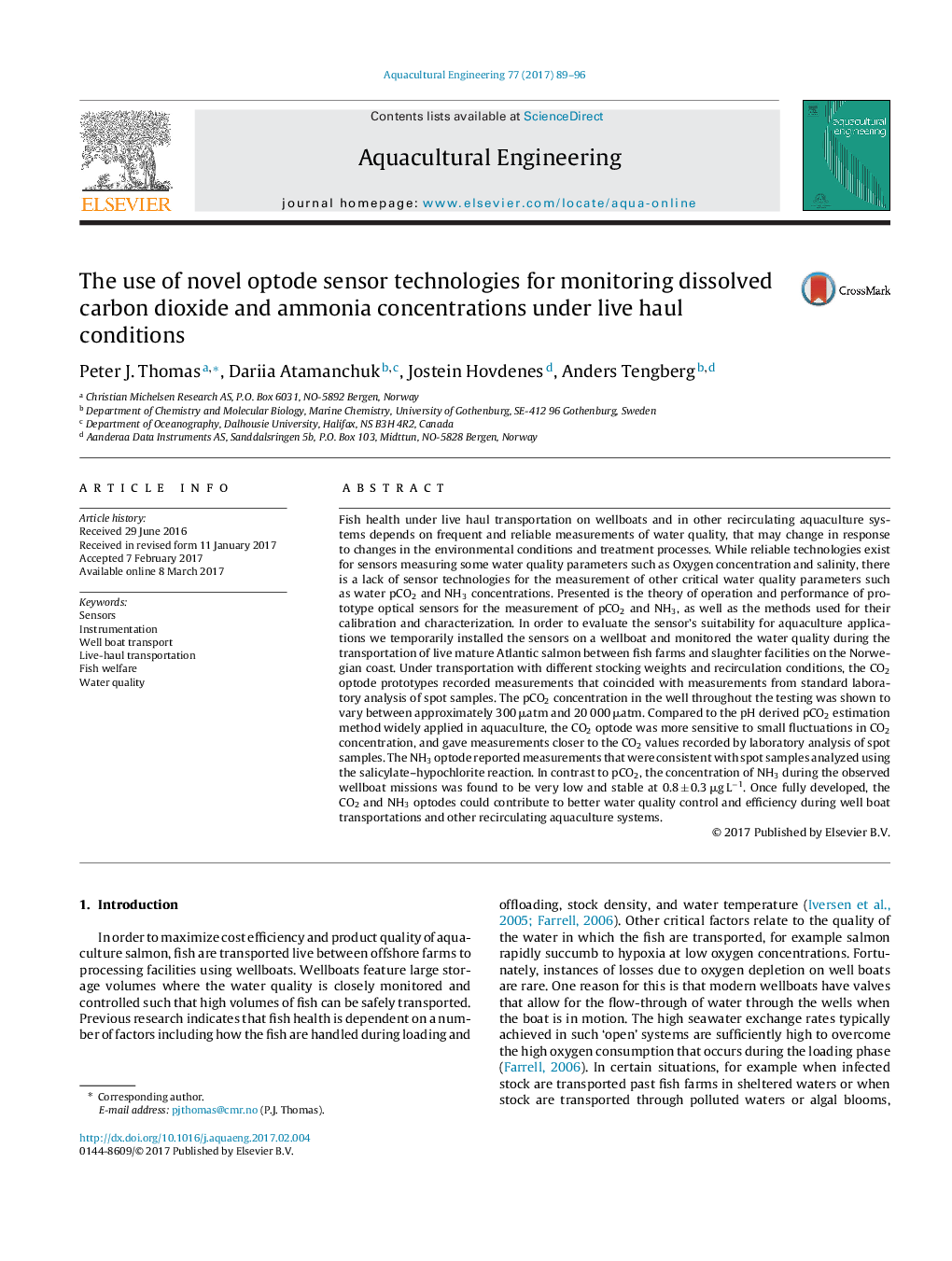| Article ID | Journal | Published Year | Pages | File Type |
|---|---|---|---|---|
| 5763941 | Aquacultural Engineering | 2017 | 8 Pages |
Abstract
Fish health under live haul transportation on wellboats and in other recirculating aquaculture systems depends on frequent and reliable measurements of water quality, that may change in response to changes in the environmental conditions and treatment processes. While reliable technologies exist for sensors measuring some water quality parameters such as Oxygen concentration and salinity, there is a lack of sensor technologies for the measurement of other critical water quality parameters such as water pCO2 and NH3 concentrations. Presented is the theory of operation and performance of prototype optical sensors for the measurement of pCO2 and NH3, as well as the methods used for their calibration and characterization. In order to evaluate the sensor's suitability for aquaculture applications we temporarily installed the sensors on a wellboat and monitored the water quality during the transportation of live mature Atlantic salmon between fish farms and slaughter facilities on the Norwegian coast. Under transportation with different stocking weights and recirculation conditions, the CO2 optode prototypes recorded measurements that coincided with measurements from standard laboratory analysis of spot samples. The pCO2 concentration in the well throughout the testing was shown to vary between approximately 300 μatm and 20 000 μatm. Compared to the pH derived pCO2 estimation method widely applied in aquaculture, the CO2 optode was more sensitive to small fluctuations in CO2 concentration, and gave measurements closer to the CO2 values recorded by laboratory analysis of spot samples. The NH3 optode reported measurements that were consistent with spot samples analyzed using the salicylate-hypochlorite reaction. In contrast to pCO2, the concentration of NH3 during the observed wellboat missions was found to be very low and stable at 0.8 ± 0.3 μg Lâ1. Once fully developed, the CO2 and NH3 optodes could contribute to better water quality control and efficiency during well boat transportations and other recirculating aquaculture systems.
Related Topics
Life Sciences
Agricultural and Biological Sciences
Aquatic Science
Authors
Peter J. Thomas, Dariia Atamanchuk, Jostein Hovdenes, Anders Tengberg,
